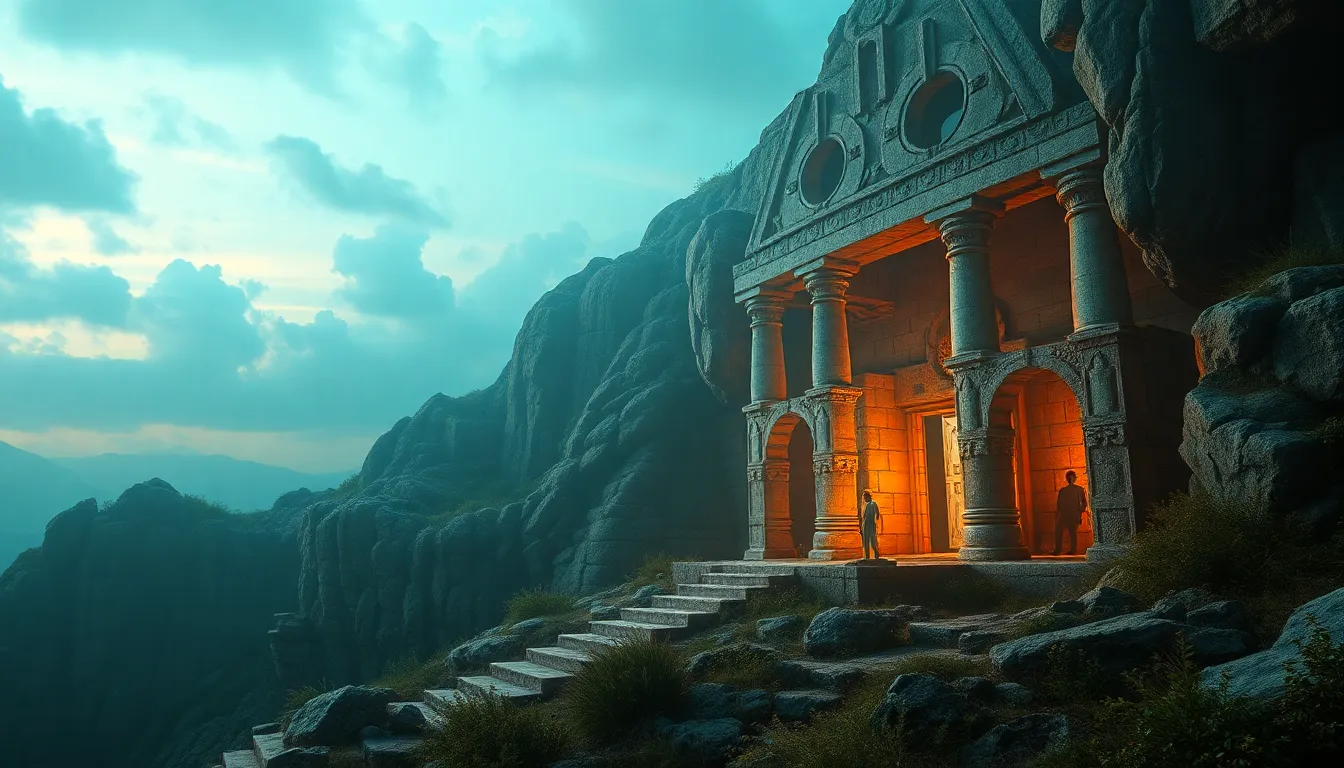Unveiling the Hidden Sanctuaries: Sacred Places in Mythology You Must Explore!
I. Introduction to Sacred Places in Mythology
Sacred places have long been integral to various cultural narratives, serving as the backdrop for mythological tales, spiritual practices, and community gatherings. These sites, often imbued with deep symbolic meaning, reflect the beliefs and values of the societies that revere them.
In this article, we will explore the concept of sacred places across different mythologies, their significance, and the reasons why they continue to attract explorers and pilgrims alike. By delving into these hidden sanctuaries, we can gain insights into the collective human experience and the enduring power of myth.
II. The Concept of Sacredness in Different Cultures
Sacredness manifests uniquely across various mythological traditions, yet common themes often emerge. Here is an overview:
- Spiritual Connection: Many sacred places are seen as direct connections to the divine or the spiritual realm.
- Ritual Significance: These locations often serve as sites for important rituals and ceremonies that reinforce cultural identity.
- Symbolism: Sacred places frequently embody symbols of creation, destruction, and rebirth, reflecting broader existential themes.
Nature and landscape play a pivotal role in defining sacredness. Mountains, rivers, and caves often represent thresholds between the earthly realm and the spiritual world, enhancing the mystical nature of these sites.
III. Ancient Greece: The Oracle of Delphi
Delphi, renowned as the site of the Oracle, was a focal point of ancient Greek spirituality. It was believed to be the center of the world, where the god Apollo communicated through the Pythia, a priestess who delivered cryptic prophecies.
Mythologically, Delphi is associated with numerous stories, including the slaying of the dragon Python by Apollo. The ancient Greeks visited Delphi to seek guidance, making it a vital center for decision-making in both personal and political realms.
Today, Delphi remains a site of historical significance, drawing visitors interested in its archaeological wonders and spiritual heritage. Efforts to preserve its ruins allow modern explorers to connect with the ancient past.
IV. The Sacred Sites of Mesoamerica: Temples of the Maya
The Maya civilization constructed impressive temples that served as both religious and ceremonial centers. These structures are steeped in mythology, often dedicated to deities associated with agriculture, rain, and fertility.
- Tikal: Known for its towering pyramids and rich biodiversity, Tikal was a major political and military center of the Maya.
- Chichen Itza: This UNESCO World Heritage Site features the iconic El Castillo pyramid and is linked to the Mayan calendar and astronomical events.
- Palenque: Renowned for its intricate architecture and hieroglyphic inscriptions, Palenque offers insights into the Maya’s spiritual practices.
These sacred sites not only reflect the cultural heritage of the Maya but also continue to impact contemporary society as symbols of resilience and identity.
V. The Mystical Mountains of Tibet: Mount Kailash
Mount Kailash is considered one of the holiest mountains in the world, revered in Hinduism, Buddhism, and Jainism. For millions, it is a symbol of divine presence and enlightenment.
Legends surrounding Mount Kailash depict it as the abode of Shiva, the destroyer and transformer in Hindu mythology. Pilgrims from various religions undertake the arduous journey to circumnavigate the mountain as an act of devotion.
The pilgrimage routes are well-trodden, with many spiritual practices intertwined with the natural landscape, emphasizing the connection between the physical and spiritual realms.
VI. The Enigmatic Isle of Avalon in Arthurian Legend
Avalon, often portrayed as a mystical island in Arthurian legend, is associated with themes of magic, healing, and the quest for the Holy Grail. According to myth, it was here that King Arthur was taken to heal after his final battle.
Avalon’s description varies across texts, but it is consistently depicted as a place of beauty and mystery, shrouded in enchantment. The search for Avalon has inspired countless interpretations, reflecting humanity’s longing for utopia and the divine.
Modern explorations of Avalon often intersect with spiritual journeys, as seekers look for meaning in the tales of Arthur and his knights.
VII. The Sacred Caves of Lascaux: A Window to Prehistoric Beliefs
The Lascaux caves in France, famous for their stunning Paleolithic cave paintings, offer a glimpse into the spiritual beliefs of early humans. These artworks, depicting animals and human figures, are thought to have held significant ritualistic or sacred meanings.
Interpretations of the cave paintings suggest they may represent hunting magic, shamanistic practices, or a connection to the natural world. Caves, in various mythologies, often symbolize the womb of the earth or the gateway to the underworld, reinforcing their sacred status.
VIII. The Underworld in Various Mythologies: A Journey Beyond
The concept of the underworld appears in many mythological traditions, each with unique interpretations:
- Greek Mythology: The Underworld, ruled by Hades, is where souls journey after death, reflecting themes of fate and justice.
- Egyptian Mythology: Duat, the Egyptian underworld, is a complex realm where souls undergo judgment and transformation.
- Norse Mythology: Hel, the realm of the dead, provides insights into Norse beliefs about life, death, and fate.
These underworlds serve as essential components of their respective mythologies, offering moral lessons and reflections on the human condition.
IX. Practical Tips for Exploring Sacred Places
As you consider exploring these sacred sites, it’s important to approach them with respect and cultural sensitivity. Here are some practical tips:
- Research: Learn about the history and significance of the site before your visit.
- Respect Local Customs: Engage with local traditions and practices, and be mindful of any restrictions.
- Leave No Trace: Preserve the sanctity of these places by minimizing your environmental impact.
By approaching these hidden sanctuaries with reverence, we can honor the cultures that have shaped these sacred spaces and the stories they tell.



